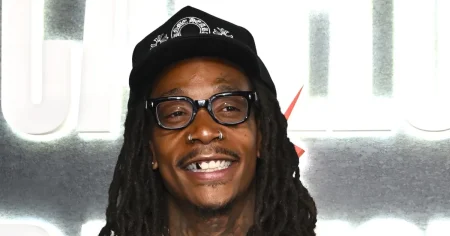Yellowstone, the Paramount Network drama centered around the Dutton family and their sprawling Montana ranch, captivated audiences with its complex characters, gripping storylines, and willingness to take risks, particularly with character deaths. The series, premiering in 2018, quickly gained a devoted following drawn in by Kevin Costner’s portrayal of patriarch John Dutton and the compelling performances of the supporting cast, including Kelly Reilly, Wes Bentley, Gil Birmingham, Cole Hauser, and Kelsey Asbille. However, behind-the-scenes tensions, particularly between Costner and creator Taylor Sheridan, ultimately led to Costner’s departure and the shocking death of his character in the latter half of season 5. This dramatic exit, shrouded in controversy and unexpected even for Costner himself, marked a significant turning point for the series.
From the very first season, Yellowstone established its penchant for unexpected and often violent character exits. Lee Dutton, John’s eldest son and heir apparent, was killed in a shootout with members of the Broken Rock Reservation, setting the stage for the ongoing conflicts that would define the series. Subsequent seasons saw a steady stream of both major and minor characters meet their demise, often in brutal and memorable ways. Teal Beck, a recurring antagonist, was unceremoniously shot by Kayce Dutton while on the toilet, a darkly comedic yet shocking moment. Land developer Dan Jenkins, after seemingly making amends with the Duttons, was gunned down in his home, highlighting the ever-present danger lurking around the family.
The second season of Yellowstone continued the trend of shocking deaths, further solidifying the show’s reputation for unpredictability. Malcolm Beck, a powerful and ruthless adversary of the Duttons, met his end in a shootout with John, adding another layer to the ongoing power struggles in the series. In a particularly chilling turn of events, Jamie Dutton, John’s adopted son and a complex character constantly grappling with his place within the family, murdered journalist Sarah Nguyen and staged her death to look like a kayaking accident. This act showcased Jamie’s ruthlessness and willingness to go to extreme lengths to protect himself and his interests. The season concluded with the brutal lynching of Wade Morrow, a ranch hand who betrayed the Duttons, by Rip Wheeler and other loyal ranch hands, a visceral display of the Dutton family’s power and influence.
Season 3 and 4 saw the demise of several key characters who posed significant threats to the Dutton family’s dominance. Garrett Randall, Jamie’s biological father and a manipulative figure who encouraged Jamie to challenge John’s authority, was ultimately killed by Jamie himself, a pivotal moment in Jamie’s character arc. Roarke Morris, a shrewd businessman and adversary of the Duttons, met a particularly gruesome end when Rip threw a rattlesnake at his face, resulting in a swift and venomous death. Even seemingly minor characters were not immune to the show’s penchant for dramatic exits, as evidenced by the death of Sheriff Donnie Haskell, who was caught in the crossfire during a diner robbery.
The culmination of these numerous character deaths, each contributing to the complex tapestry of the Yellowstone narrative, ultimately led to the most controversial exit of all: John Dutton himself. Initially portrayed as a suicide, John’s death was later revealed to be a murder-for-hire plot orchestrated by Sarah Atwood, a ruthless businesswoman who sought to dismantle the Dutton empire. This shocking twist sent ripples through the Yellowstone universe, leaving fans reeling and uncertain about the future of the Dutton ranch. Sarah Atwood herself eventually met a violent end, riddled with bullets in her car, highlighting the cyclical nature of violence and revenge that permeates the show.
The deaths in Yellowstone are not merely plot devices; they are integral to the show’s exploration of themes like loyalty, betrayal, power, and the cost of maintaining a legacy. Each death, from the explosive shootouts to the more calculated murders, underscores the precariousness of life in the world of the Duttons and the lengths to which people will go to protect their interests. The show’s willingness to kill off even major characters, culminating in the death of John Dutton himself, reinforces the idea that no one is safe in the cutthroat world of Montana ranching and power struggles. This constant threat of violence and loss creates a palpable tension that keeps viewers on the edge of their seats, wondering who will be next to meet their demise.















